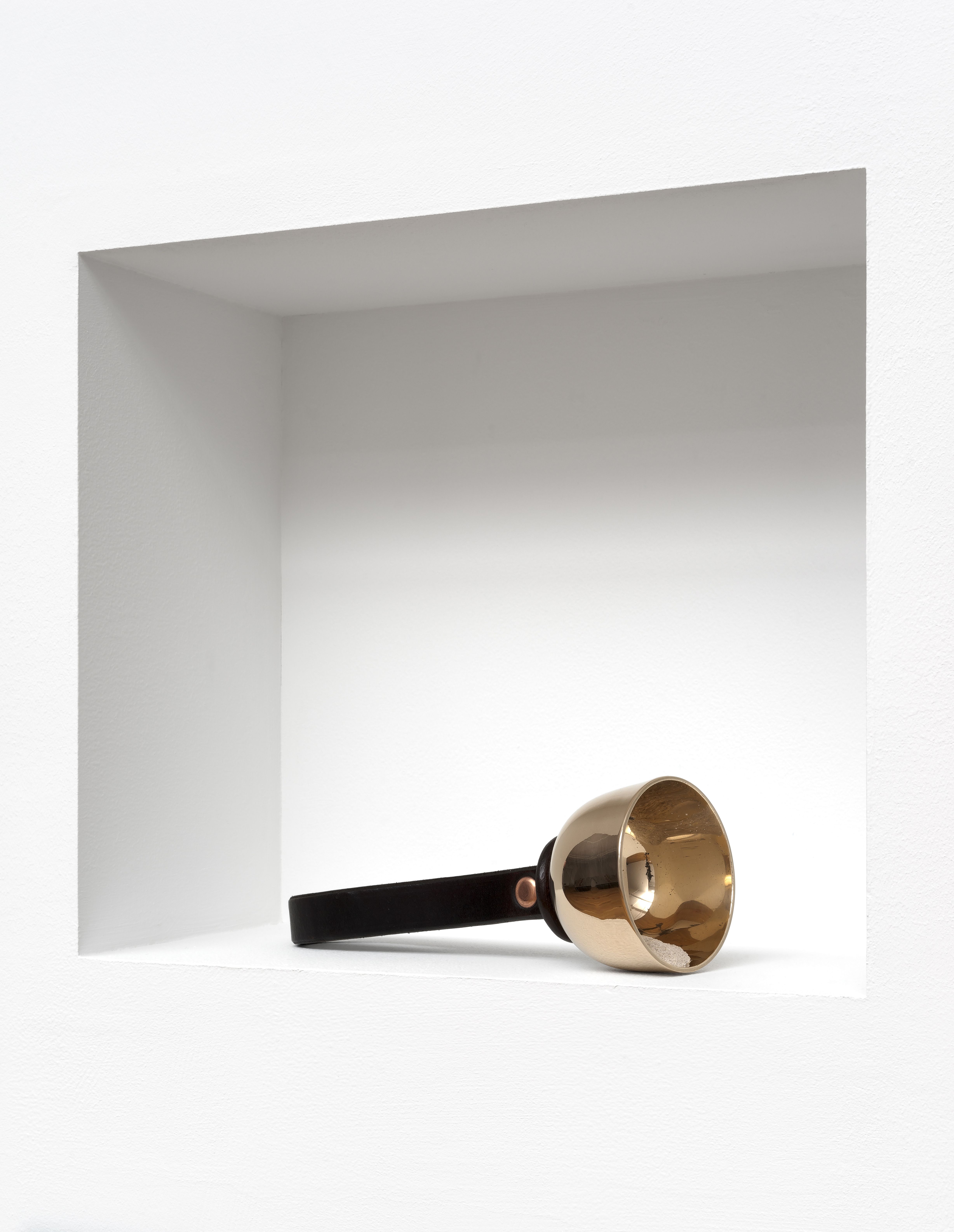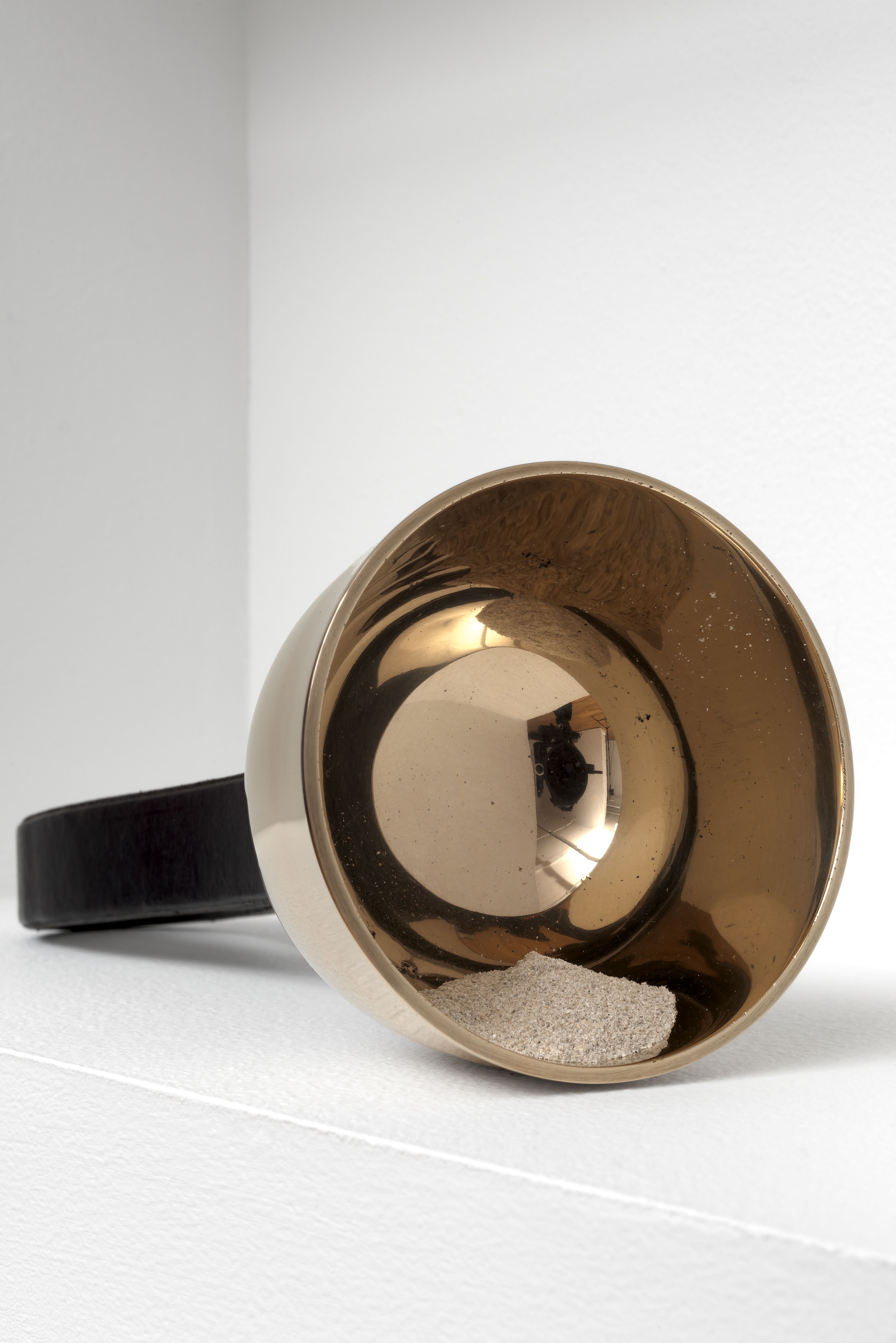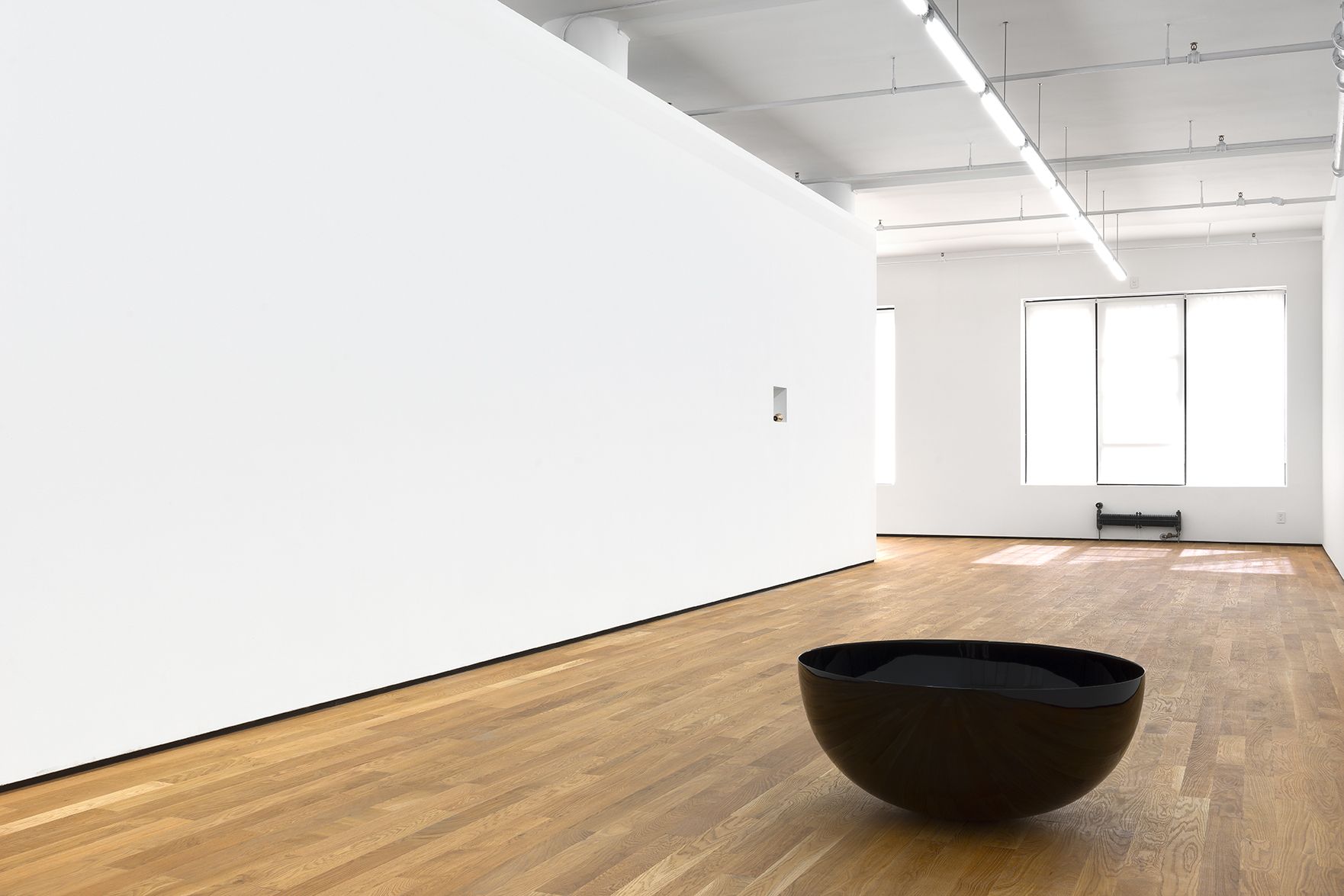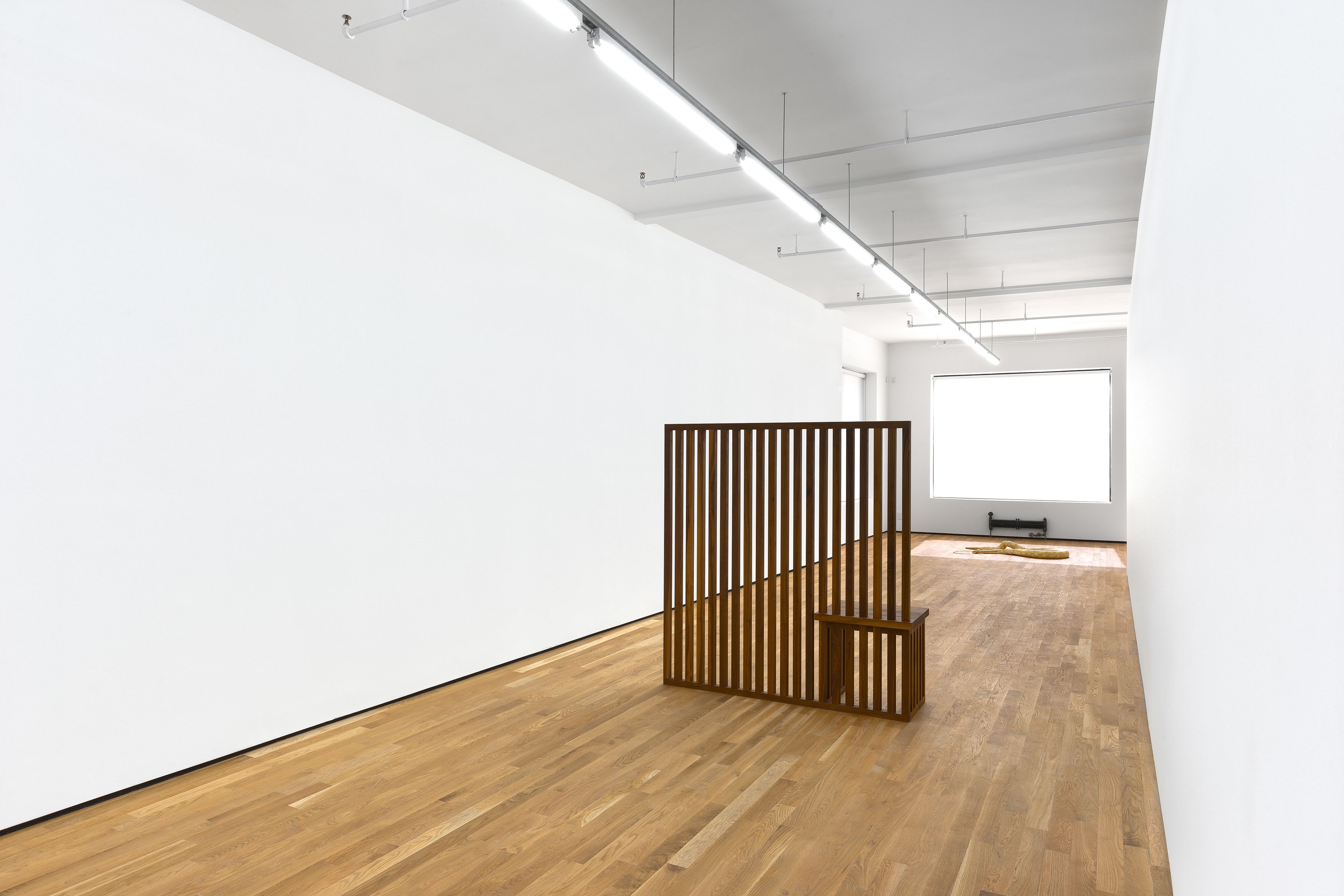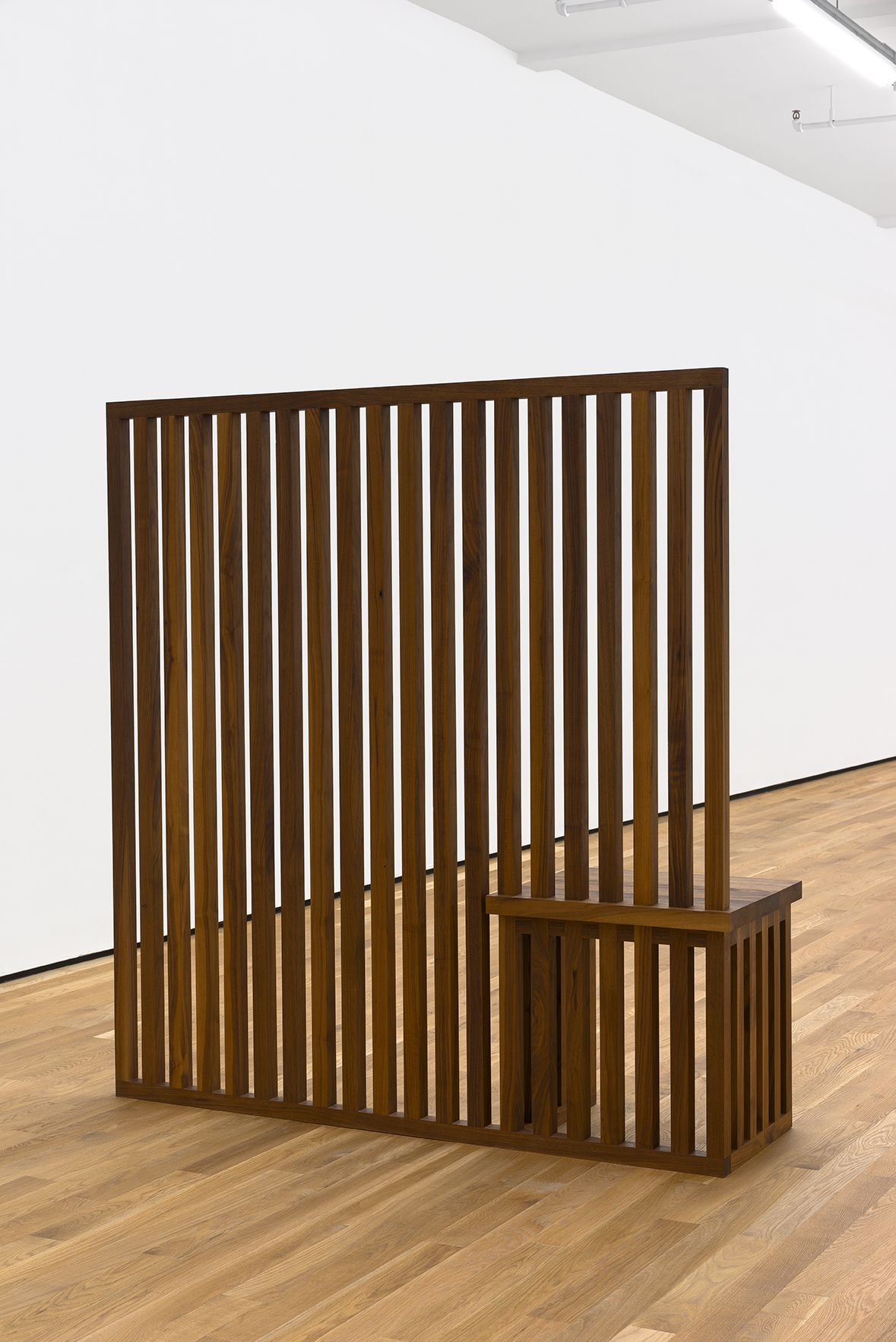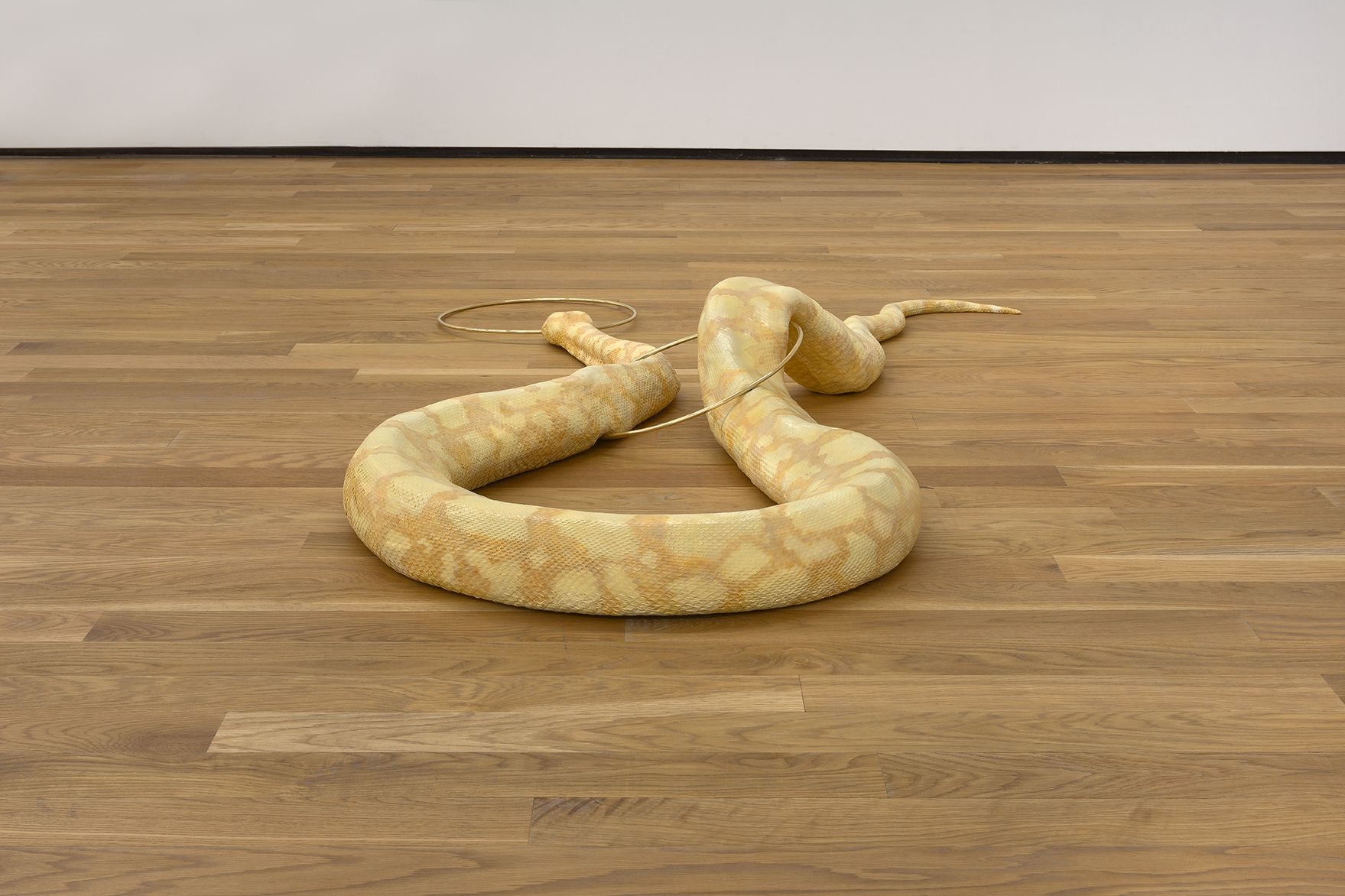Foxy Production is pleased to present the gallery’s second solo exhibition of sculpture by Stephen Lichty. It marks the first solo exhibition in the gallery’s new Chinatown space.
Stephen Lichty applies traditional crafts, including bell-making, lacquer-working, taxidermy, and woodworking, to extraordinary ends. He uses fundamental materials – metal, lacquer, biological remains, wood – to produce elegant, allusive objects. Their unexpected placement, form, scale, and function produce a charged atmosphere rich with performative possibility.
Lichty’s sculpture embodies dualities that include both positive and negative space, both presence and absence. The artist is interested in how sculpture can manifest the immaterial; how it can embody poetics, action, time, and ritual. His works act as potential supports for substances, bodies, or psychological associations.
The exhibition comprises a handbell containing human cremains, set into a wall alcove; an exceptionally large lacquer bowl made using a Japanese urushi technique; a black walnut screen that includes a seat; and a large, taxidermied snake with two bronze rings.
A small bronze bell with a leather handle lays on its side, holding human remains. Inset into the wall of the gallery, the bell is ripe with symbolism; it can connote ritual, commemoration, time-passing, celebration. The work signals religious rites, the technologies used to cope with and understand the human condition – here in extremis, in the form of ashes.
A large lacquer bowl made in the age-old manner with Japanese urushi artist, Gen Saratani, sits on the gallery floor. Highly reflective, it appears jet black, yet it is unpigmented: it is made from layer upon layer of natural lacquer, originally bled from a Japanese lacquer tree. It refracts both the lights above it and the people that peer into it. While reminiscent of a Light and Space minimalist sculpture, the bowl’s traditional fabrication looks to the past rather than an industrial present.
A black walnut screen with vertical slats has a seat on one side. Its combination of screen and seat is anomalous and opens up a range of interpretations: it may be Shaker furniture, a guard’s vantage point, or a Japanese screen. The work links traditional minimal design, whether European or Asian, to the history of minimalism within late Modernism.
A large python is held in position by a bronze ring; it holds another in its mouth. The work’s taxidermy is expert: the snake is life-like, although its pale yellow and light tan coloring is unusual. Muscular, flexing, and powerful, it seems to be sliding through the ring. Not unlike a James Lee Byars’ installation, the work throws up so many allusions – to magic, desire, nature, myth – that vie for the viewer’s attention, that one experiences an overwhelming excess of suggestion.
CREDITS
Installation photography: Mark Woods.
